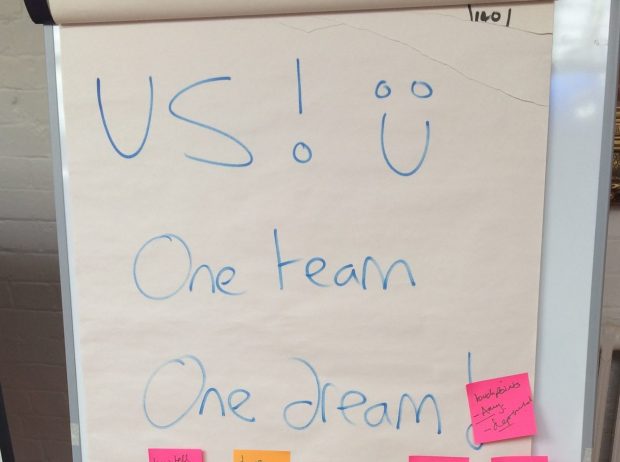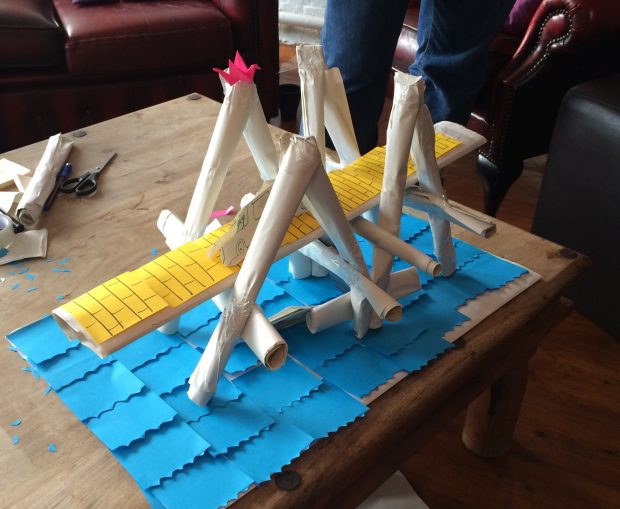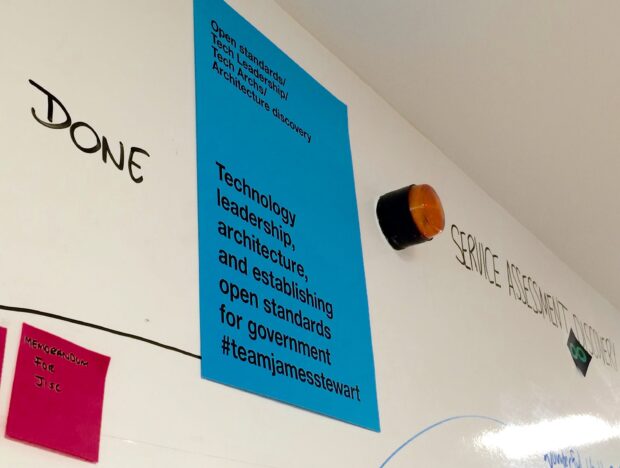‘Away days’: a phrase that conjures fear in my mind. Images of awkward interactions that are too close for an office-based environment make me shiver and the thought of telling people about myself makes my ears buzz.
Away days are strange beasts and everyone will have their own horror stories. They’re always too long/too short, too many/too few activities. And the inevitable downfall of all away days is an enforced idea that ‘everything will be better after the away day’.
So I, an avid hater of away days, ended up planning one!
What is the user need?
It's a prolific phrase at GDS but it is used so much for a reason! We don’t simply apply a user-focused approach to our services but to all aspects of our work.
Using a Google Form, we asked the team for their preferences about various factors involved including: length of time, aims for the day and people's’ fears of away days (in the hopes of mitigating them).
Location, location, location
All of us have experienced team-building exercises in our day to day office. They don’t often work! There is something about being in the environment where there may already be hierarchies, or pre-conceived ideas that restrict the open thinking needed for away days. So we knew we had to go ‘off-site’.
Cost is always something to consider but even another government office can be enough of a difference to draw people out of their comfort zones and start talking.
How do you frame an away day?
The away day is a cheesy concept. There’s no getting away from it, so instead of shying away from it, we embraced that cheesiness, in a tongue-in-cheek manner. We poked fun at those motivational posters prolific on the internet and adopted the phrase ‘one team, one dream’ as our motto for the day!
We used this cheesiness to exemplify the aim of the day: to create cohesion and a shared vision, and played to it with humour both in the build-up to the day and the day’s activities.

We positioned the day as an opportunity to work as a team on new challenging and fun situations that required us to interact and brainstorm with each other. We wanted to learn to be supportive, appreciative, and creative when solving problems! This meant using a fast paced environment to keep energy high and to use lots of different communication and engagement styles.
Any away day can be a painfully scary place for introverts. So I wanted to ensure the day was comfortable and allowed people to engage whether they enjoyed standing in front of others or not. As such any public speaking aspect, such as introductions, was caveated with an opportunity to submit comments, questions or introductions to the organisers so they could be read out on their behalf.
What the programme looked like
We hosted a series of short sessions, to maintain interest, and interspersed small group work with whole-group work; had sessions with mixed teams and programme teams.
Each of our sessions focused on a particular aspect of what makes for great teamwork. Silent communication, working together, and successful delegation.
The programme in brief comprised of:
- 3 ‘icebreakers’ conducted in small mixed teams
- Blind drawing. One person has a picture of a geometric shape and the other has a blank piece of paper. The team member with the picture must describe the image while the other team member draws what is being described.
- Working together. In silence teams must arrange themselves according to a series of categories, such as height or shoe size.
- The barter puzzle. Each team has puzzle pieces, they must barter with the other teams for the pieces they need to complete their own puzzle.
- working in programme teams to craft a 140 character ‘tweet’ describing their team and what they do
- talking together as a group about what we need to do to work better together
- a ‘bridge’ building competition using only paper and sellotape

You said, we did
No one likes an away day that achieves nothing except for a day out of the office. A key aim of the away day was to come up with some actions we could follow up with in the weeks to come.
These were shared round with a summary of the day with all team members (even those who couldn’t attend) so we were held accountable if we didn't deliver.
We also wanted to celebrate the work the teams had done during the away day so those ‘tweets’ we crafted, they have been turned into posters and stuck on the walls of the office.

What did I learn?
The most valuable lesson I learnt from our away day was during lunch. I was checking my timetable, checking my watch (phone) and worrying about how behind schedule we were (by 15 minutes!).
A colleague looked to me and told me how much she was enjoying the day. Not simply the activities but the fact that she now had the opportunity to talk to someone she sat next to every day about something of importance. They were simply so busy while in the office they struggled to find time to discuss longer term things.
So I stepped back, relaxed and embraced the fact that the best part of an away day is that we are all there to build bridges. Literally.
Follow Lucy on Twitter, and don’t forget to subscribe to the blog.